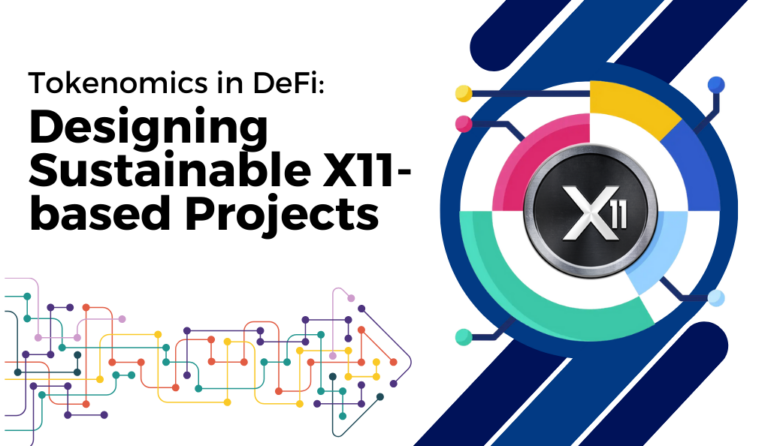Cryptocurrency mining, often simply referred to as “mining,” is a fundamental process that underpins the functionality of most decentralized digital currencies. At its core, mining involves solving complex mathematical problems to validate and record transactions on a blockchain. This process ensures the security and integrity of the cryptocurrency network.
How Does Crypto Mining Work?
When a user initiates a cryptocurrency transaction, it is grouped with other transactions into a block. Miners then compete to solve a cryptographic puzzle related to that block. The first miner to solve the puzzle gets the privilege of adding the block to the blockchain and is rewarded with newly minted cryptocurrency coins. This reward serves as an incentive for miners to continue their work and also introduces new coins into the system.
Why is Mining Energy-Intensive?
The cryptographic puzzles that miners must solve are designed to be difficult. This difficulty ensures that it takes a significant amount of computational power and, by extension, energy to solve them. The more miners there are competing to solve these puzzles, the more energy the entire network consumes.
The Carbon Footprint of Traditional Crypto Mining

The environmental impact of cryptocurrency mining has been a topic of intense debate and scrutiny in recent years. Traditional crypto mining operations, especially in the early days of cryptocurrencies, primarily relied on the cheapest available energy sources to maximize profits. Unfortunately, these sources were often non-renewable, such as coal and other fossil fuels.
The Environmental Toll of Fossil Fuels
Fossil fuels, while abundant and cost-effective, come with a heavy environmental price tag. Burning coal, oil, and natural gas releases significant amounts of carbon dioxide (CO2) and other greenhouse gases into the atmosphere. These emissions contribute to global warming, leading to climate change and its associated challenges, such as rising sea levels, extreme weather events, and loss of biodiversity.
When crypto mining operations use fossil fuels as their primary energy source, they inadvertently contribute to these environmental issues. For instance, a single Bitcoin transaction has been estimated to have the same carbon footprint as watching over 50,000 hours of YouTube videos!
Geographical Concentration of Mining Operations
Historically, a significant portion of global crypto mining activities has been concentrated in regions where electricity is cheap, often due to an abundance of coal. For example, China, rich in coal reserves, has been a dominant player in the Bitcoin mining scene, accounting for over 65% of the global Bitcoin hash rate as of 2020. This concentration meant that a large fraction of global crypto mining was powered by coal, amplifying its environmental impact.
The Rise of Green Crypto Mining
The environmental concerns surrounding traditional crypto mining have catalyzed a transformative shift in the industry. As the world becomes more eco-conscious, the crypto community is not lagging behind. Green crypto mining, which emphasizes sustainable and eco-friendly practices, is rapidly gaining traction.
Harnessing Renewable Energy
The heart of green crypto mining lies in the utilization of renewable energy sources. These sources, including solar, wind, hydroelectric, and geothermal, offer a sustainable alternative to fossil fuels. They produce little to no greenhouse gas emissions, making them an ideal choice for environmentally-conscious mining operations.
Solar panels, for instance, can be installed directly at mining facilities, converting sunlight into electricity to power mining rigs. Similarly, hydroelectric power, derived from the movement of water, can provide a consistent and clean energy source for mining operations located near water bodies.
Benefits Beyond the Environment
While the environmental benefits of green crypto mining are evident, the shift to sustainable practices also offers economic advantages. Renewable energy, once set up, can lead to reduced operational costs in the long run. For instance, solar panels, after the initial investment, can provide free electricity for years, significantly reducing the cost per transaction.
Moreover, as regulatory pressures increase and consumers demand more eco-friendly practices, green crypto mining can enhance a company’s reputation and market standing. It can also open doors to regions and countries that are championing renewable energy, offering tax incentives and other benefits to sustainable businesses.
Innovative Solutions and Collaborations
The crypto industry is known for its innovative spirit, and green mining is no exception. New technologies and solutions are continually being developed to enhance the efficiency and sustainability of mining operations. For example, some companies are exploring the potential of using excess heat generated from mining rigs for other purposes, such as heating buildings.
Misconceptions about Crypto Mining’s Energy Sources
As the discourse around sustainable crypto mining intensifies, several misconceptions have emerged, clouding public understanding. Addressing these misconceptions is crucial for informed decision-making and fostering a genuine transition to green mining practices.
Myth 1: Crypto Mining Exclusively Uses Fossil Fuels
One of the most prevalent misconceptions is that cryptocurrency mining relies solely on fossil fuels. While it’s true that many early mining operations were powered by coal and other non-renewable sources due to their cost-effectiveness, the landscape has evolved. A 2020 study by the Cambridge Centre for Alternative Finance revealed that nearly 29% of global crypto mining is powered by renewable energy sources. This percentage is expected to grow as the industry shifts towards sustainability.
Myth 2: Renewable Energy Can’t Power Large-Scale Mining Operations
Another common myth is that renewable energy sources lack the capacity to power large-scale mining operations. In reality, advancements in renewable energy technologies have made it feasible to power extensive mining farms. Countries like Iceland, with abundant geothermal energy, and parts of China, with vast hydroelectric power resources, are testament to the potential of renewables in the crypto mining sector.
Myth 3: Green Crypto Mining is Merely a Marketing Gimmick
With the rise of corporate social responsibility, some skeptics argue that green crypto mining is just a marketing strategy with no real impact. While there might be instances of “greenwashing” (where companies exaggerate their eco-friendly practices for publicity), many enterprises are genuinely investing in sustainable mining solutions. These companies recognize the long-term benefits, both environmentally and economically, of adopting green practices.
Myth 4: Transitioning to Green Mining is Prohibitively Expensive
The initial investment required for renewable energy infrastructure can be higher than setting up a traditional mining operation. However, this perspective is short-sighted. Over time, the reduced operational costs, potential tax incentives, and positive market reception can lead to significant savings and profits for green mining operations.
Measuring the Sustainability of Crypto Mining

Quantifying the sustainability of crypto mining is a complex endeavor. While it’s relatively straightforward to measure the energy consumption of mining operations, determining the environmental impact of that energy use requires a deeper dive into the energy mix and other factors.
Understanding the Energy Mix
The environmental impact of crypto mining is intrinsically linked to the energy sources powering it. Two mining operations consuming the same amount of energy can have vastly different carbon footprints depending on their energy mix. For instance, a mining farm powered primarily by coal will have a significantly higher carbon footprint than one using hydroelectric power.
To truly gauge the sustainability of a mining operation, one must consider:
- The percentage of renewable energy in the energy mix.
- The efficiency of the mining equipment.
- The carbon footprint of producing and transporting the energy.
Challenges in Emission Calculations
Directly measuring the carbon emissions of crypto mining can be tricky. Without detailed insights into the energy mix and the efficiency of the mining rigs, estimates can vary widely. Moreover, the decentralized nature of many cryptocurrency networks makes it challenging to gather comprehensive data.
The Role of Third-party Audits
To address these challenges and provide transparency, many crypto mining companies are turning to third-party audits. These audits, conducted by environmental consultants and experts, evaluate the energy sources, consumption patterns, and overall sustainability practices of the mining operations. The results offer a more accurate picture of the operation’s environmental impact and can be a valuable tool for investors and the public.
Innovative Metrics and Tools
The crypto industry, known for its innovation, is developing tools and metrics to better measure sustainability. For instance, some companies are working on blockchain-based solutions that track and verify the renewable energy used in mining operations. Others are creating sustainability indices that rank mining operations based on their environmental practices.
Defining “Green” in Crypto Mining
The term “green” has become a buzzword in various industries, including cryptocurrency. However, its interpretation can vary, leading to confusion and miscommunication. To truly understand the sustainability efforts in crypto mining, it’s essential to delve into the nuances of what “green” really means in this context.
Zero-Carbon vs. Carbon Neutral
Two terms often used interchangeably in discussions about sustainability are “zero-carbon” and “carbon neutral.” However, they represent distinct concepts:
- Zero-Carbon: This implies that no carbon emissions were produced during a particular process, such as the creation of a product or service. In the context of crypto mining, a zero-carbon operation would be one that exclusively uses energy sources that do not emit carbon, like solar or wind power.
- Carbon Neutral: This term means that any carbon emissions produced are offset by activities that remove an equivalent amount of carbon from the atmosphere. For crypto mining, this could involve using carbon credits or investing in projects like reforestation. While the mining operation itself might produce emissions, these are balanced out by the offsets.
The Controversy Around Carbon Credits
Carbon credits or offsets are a popular method for companies to claim carbon neutrality. However, their effectiveness is a topic of debate. While they can support valuable environmental projects, they don’t always guarantee a net reduction in global carbon emissions. For instance, protecting a forest in one region might lead to increased deforestation elsewhere, negating the intended benefits.
The Importance of Holistic Sustainability
While energy consumption and carbon emissions are at the forefront of the green crypto mining discussion, true sustainability encompasses more. It involves considering the entire lifecycle of mining equipment, from manufacturing to disposal. It also means looking at the broader social and economic implications of mining operations, ensuring they benefit local communities and don’t lead to resource depletion or other negative impacts.
Setting and Meeting Green Standards
As the demand for sustainable crypto mining grows, so does the need for clear and universally accepted standards. Industry groups, environmental organizations, and regulatory bodies are working together to define these standards. They aim to provide a clear framework for mining operations to achieve genuine sustainability, beyond just marketing claims.
Conclusion
The evolution of cryptocurrency is at a crucial juncture, with sustainability at its core. As global awareness of environmental challenges grows, the crypto industry must adapt, embracing green mining practices. While the path to sustainable crypto mining presents challenges, the sector’s innovative spirit offers hope. The move towards green practices isn’t just about reducing carbon footprints; it’s about harmonizing technology with ecology for a brighter future. In essence, the journey of “The Green Miner” symbolizes the broader aspiration for a sustainable, harmonious coexistence between digital advancements and our planet.
At axerunners.com, our goal is to furnish well-rounded and trustworthy information regarding cryptocurrency, finance, trading, and stocks. Nonetheless, we avoid providing financial advice and instead encourage users to conduct their own research and meticulous verification.
Read More













